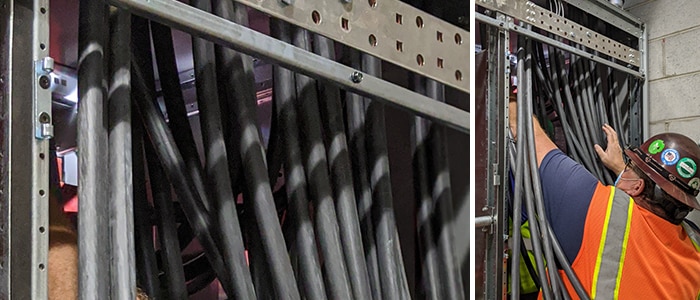When a manufacturer needs to update equipment, install new technology, perform equipment maintenance or service existing equipment—all jobs that can involve a number of people and take a number of days to complete—it is quite typical that they will schedule a “shutdown” — a time where the company will close a line (or the entire business) in order to accomplish the desired task.
For this reason, you’ll find that many companies choose to schedule shutdowns during already- planned breaks, like long holiday weekends, ensuring that the company isn’t adding to their time out of service more than necessary. Additionally, some will capitalize on this time and add additional projects to the shutdown—taking advantage of every second possible to ensure that every piece of equipment on the line is running smoothly and efficiently.
As with any large project, planning is key, and a lack of planning can be detrimental—costing additional time, money and resources to accomplish what could have been a straightforward task. During the planning period, a number of things will be determined—how many employees it will take, the timeline and process, needed safety measures, and team roles. With Hill Electric, everyone has a designated role, but is able to work together to get the job done quickly and correctly.
“We plan every move we are going to make so when we are on site, we can just act, and there’s no need to figure out the plan on the go,” said David Wolke, Director, Labor and Safety. “There are times when things don’t go as planned, but those should be exceptions, so you’re not spending unnecessary time on site—and more of the customers’ money—trying to figure it out.”
When it comes to the equipment and safety—two things vital to the success of each shutdown—Hill Electric ensures that both are planned for in advance. While most equipment and materials are housed in the Hill Electric warehouse, anything new that is required is sourced from local suppliers to help the local economy and nearby businesses. In terms of safety, the team takes every aspect of the job into consideration—even the recent requirements due to COVID.
“We take our normal safety measures of protective gear into every site, but we also have different safety regulations for each customer,” says Casey Johnson, Director, Estimating and Project Management. “With COVID, there has been more of a process in terms of safety which include temp checks and personal protection equipment, but fortunately it hasn’t really impacted the day-to-day on-site work. In any case, we always take all necessary precautions and take safety seriously both for our guys and for our customers.”
Once all planning is done and the day of the shutdown arrives, the Hill Electric team moves immediately into action. To limit error and provide a seamless experience, the same team will be on-site from Day 1 until completion, whether the shutdown lasts from 24 hours to a number of days. Once a walk-through with the customer is complete and everyone verifies that everything was done correctly, the shutdown can end and the company can get back up and running.
“We definitely have a hometown advantage; many of our customers are repeat customers and local, so we talk to them throughout the year—not just in prep for a shutdown,” says David Wolke, Director, Safety and Labor. Because of this, we also know the ins and outs of the site, making it a lot easier when going in because we know exactly where to go and where certain equipment is installed. In the end, we have great connections with our customers.”









